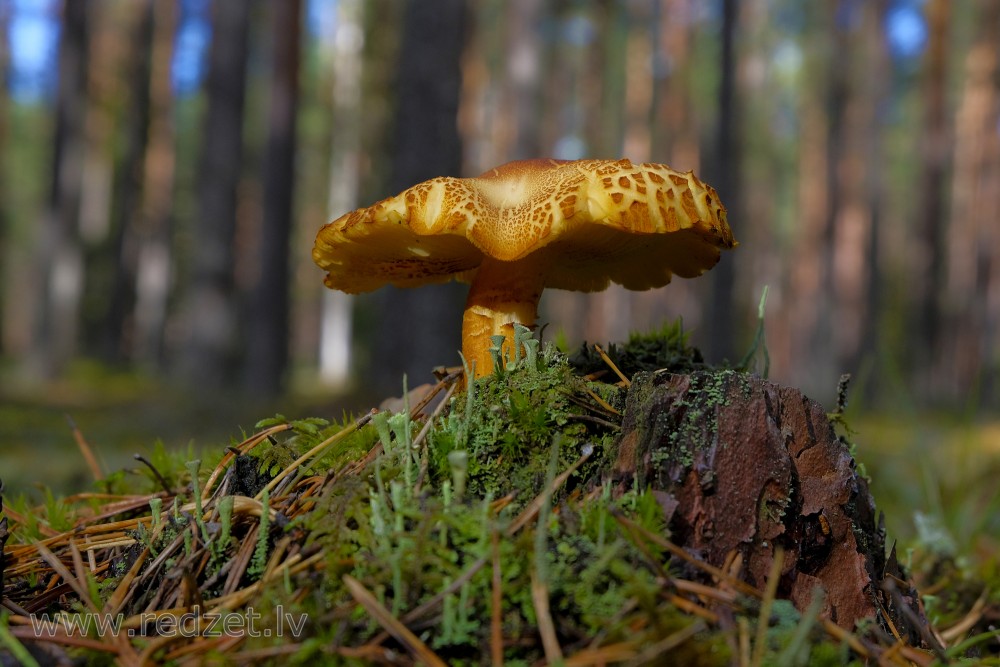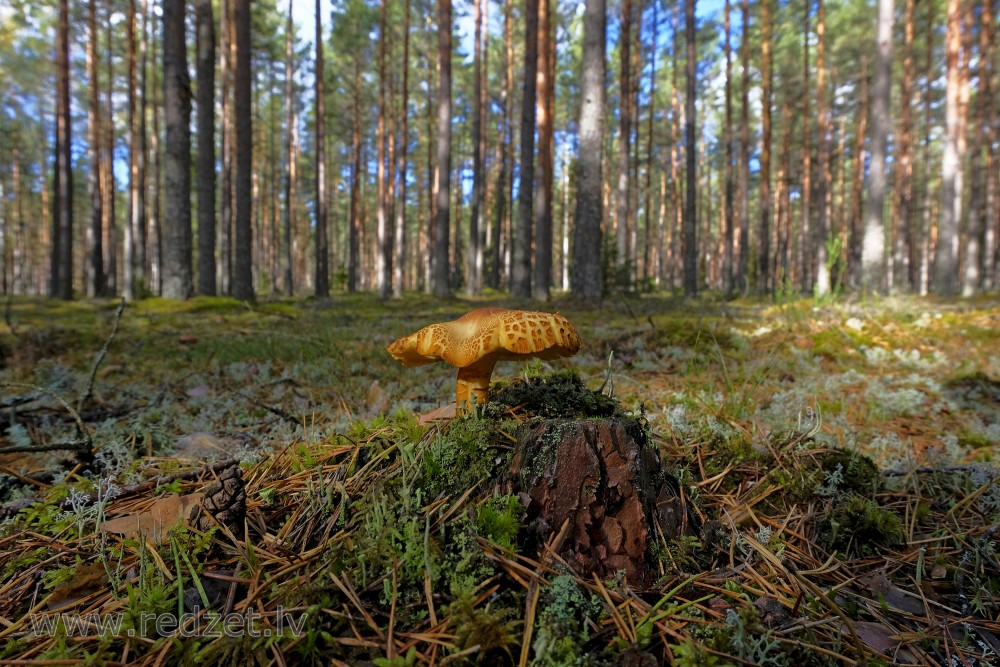Plums and Custard (Tricholomopsis rutilans)
Tricholomopsis rutilans, known by the unusual but apt common name of Plums and Custard or, less commonly Red-haired agaric, is a species of gilled mushroom found across Europe and North America.
| Plums and Custard | |
| Tricholomopsis rutilans | |
| Kingdom: | Fungi |
| Division: | Basidiomycota |
| Class: | Agaricomycetes |
| Order: | Agaricales |
| Family: | Tricholomataceae |
| Genus: | Tricholomopsis |
| Species: | T. rutilans |
Description
A striking and easily recognised fungus, Plums and Custard takes its common name from its plum-red scaled cap and crowded custard yellow gills. The flesh is cream-coloured and spore print creamy white. The base colour of the cap under the scales is yellow. The cap is convex and 4–10 cm (1.5–4 in) across. The stipe (stem) is cylindrical and up to 10 cm (4 in) tall with a red scaly base developing to a yellow colour towards the cap. It has no ring or volva.
Distribution and habitat
Tricholomopsis rutilans can be found growing on tree stumps and logs (especially those of spruce) in coniferous woodlands throughout the northern hemisphere, in places as diverse as Ireland, Bulgaria, Ukraine and North-West Russia, in late summer and autumn (June until November). It has also been found, probably accidentally introduced, in Australia and Costa Rica on introduced pine trees. A related species Tricholomopsis decora is also found in conifer woods but is golden in colour, much less common and found at higher altitudes.
Edibility
Many older texts list T. rutilans as apparently able to be eaten after boiling, though not recommended. A couple of more recent books list it as inedible.
en.wikipedia.org
Appearing in conifer forests across the continent, Tricholomopsis rutilans is a saprobe that decays fallen wood. It is easily recognized by the densely packed, bright red to purplish red fibers and scales on the cap and stem, covering the yellow surfaces beneath almost entirely when the mushroom is young. The gills are yellow, the spore print is white, and there is no partial veil. Under the microscope, Tricholomopsis rutilans features abundant large, inflated cheilocystidia.
Description:
Ecology: Saprobic on the well decayed wood of conifers; occasionally found in woodchips, sawdust, and lignin-rich soil; growing alone, scattered or small troops; summer and fall (also winter and spring in warm climates); widely distributed in North America.
Cap: 3-12 cm; convex with an incurved margin, becoming broadly convex, broadly bell-shaped, or nearly flat; dry; densely covered with red to purplish red or brick red fibers; with maturity the fibers aggregating into small scales and the yellow ground color beneath showing through.
Gills: Attached to the stem; close or crowded; yellow.
Stem: 4-12 cm long; up to 2 cm thick; yellow, covered with red fibers like those on the cap--but often more sparsely, especially in age; with a yellow, fiber-less zone at the extreme apex.
Flesh: Yellow to pale yellow.
Odor and Taste: Odor fragrant or not distinctive; taste mild or slightly radishlike.
Chemical Reactions: KOH red on cap surface.
Spore Print: White.
Microscopic Features: Spores 5-7 x 3-5 µ; smooth; broadly elliptical or drop-shaped; inamyloid. Pleurocystidia occasional; often barely projecting beyond basidia. Cheilocystidia abundant; variously shaped (clavate, fusoid-ventricose, fusoid-cylindric, etc.); up to 100 x 30 µ; often collapsing. Pileipellis a cutis; hyphae 5-15 µ wide; reddish in KOH. Clamp connections present.
www.mushroomexpert.com

